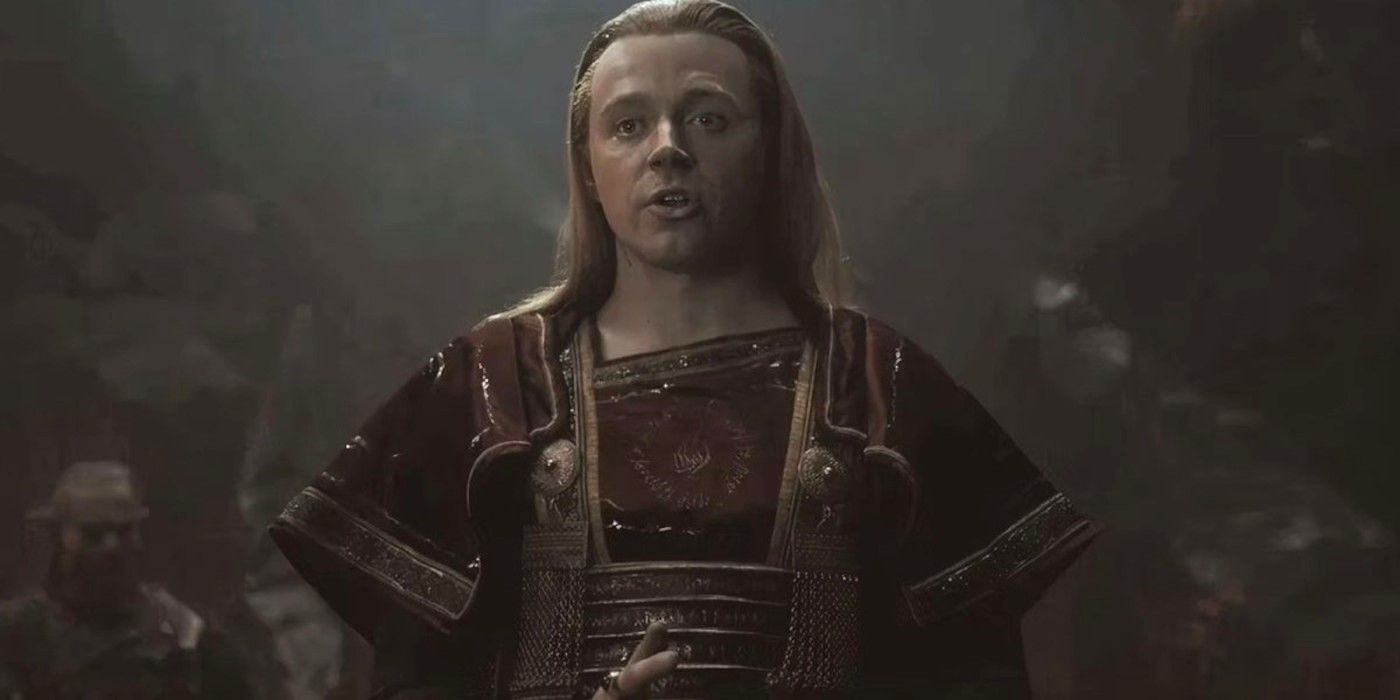
The news that season 2 would feature two Saurons may have confused some viewers, but longtime fans of J.R.R. Tolkien’s books likely suspected where the show was going. Lowden’s take on Sauron confirms that the series is including a key piece of Tolkien’s lore. It also adds context to Sauron and Adar’s animosity towards one another, explaining numerous elements of season 2 in just one scene.
Sauron Is Still A Shapeshifter During The Rings Of Power’s Timeline
The Lord Of The Rings Villain Can Take On Different Forms

Sauron is a shapeshifter in The Rings of Power‘s timeline, and season 2, episode 1 uses this to explain Lowden’s portrayal of the character. The opening scene takes viewers back into the past, right after Morgoth’s fall from power. Sauron attempts to install himself as the new master of the Orcs. He intends to use them to enslave the rest of Middle-earth, and he threatens the Orcs with violence if they don’t comply. Adar saves them from serving Sauron, tricking Lowden’s character into letting him close, then stabbing him with his own headpiece.
Adar kills Sauron during this scene, but the villain’s history as a shapeshifter allows him to reform later on. This is why Lowden plays the character in The Rings of Power season 2’s premiere; he hasn’t taken the shape of Halbrand yet, opting for another form instead. This establishes Sauron’s powers further in The Rings of Power season 2, and it sets the stage for his debut as Annatar in episode 2. Vickers still portrays Sauron as Annatar, but it’s not impossible that we’ll see another version of Sauron form before the Amazon series is over.
Sauron Changes Form When He Recovers From Near-Death Experiences
J.R.R. Tolkien’s Writings Set The Precedent For This

In addition to introducing Sauron’s shape-shifting in The Rings of Power season 2, the series establishes how he changes forms through Lowden’s appearance. It seems that Sauron mainly shifts after near-death experiences. Sauron’s speech during season 2’s opening scene hints at this, as he tells the Orcs, “Always after a defeat, the shadow takes another shape.” It makes sense that Sauron would need to find a new body to inhabit after losing the old one. And Tolkien’s books also set a precedent for this, even if they don’t specify it as a rule.
In Tolkien’s books, Sauron takes the form of Annatar after he and Morgoth are defeated at the end of the First Age. As no one recognizes him as Annatar, it’s safe to assume his original shape is completely different. His Annatar form marks his comeback during the Second Age of Middle-earth, and Sauron changes once more after he’s defeated by the Last Alliance of Elves and Men. He returns as the Necromancer in the Third Age, taking on the form that we see in Peter Jackson’s Lord of the Rings movies.
Sauron Likely Chose Halbrand, A Mortal Form, To Avoid Being Detected
He Couldn’t Risk Adar Recognizing Him










One might wonder why Sauron takes the shape of a mortal man in The Rings of Power season 1, but his feud with Adar explains this. Sauron is weakened after his initial defeat, and he likely wants to avoid detection from his enemies. Adar would recognize Sauron if he looked the same as he did during season 2’s opening scene. By appearing as Halbrand, the supposed king of the Southlands, he manages to escape Adar’s notice even into season 2.
It’s possible other enemies would also recognize Sauron in his previous form, but pretending to be Halbrand allows him to gain the trust of mortals and Elves alike.
It’s possible other enemies would also recognize Sauron in his previous form, but pretending to be Halbrand allows him to gain the trust of mortals and Elves alike. The fact that he’s seemingly an ordinary man makes people underestimate him. They don’t sense the danger he poses until the end of The Rings of Power season 1. And without an announcement that Sauron is back, he manages to continue fooling characters like Adar into The Rings of Power season 2. This shows how cunning Sauron is with the power of deception on his side.





